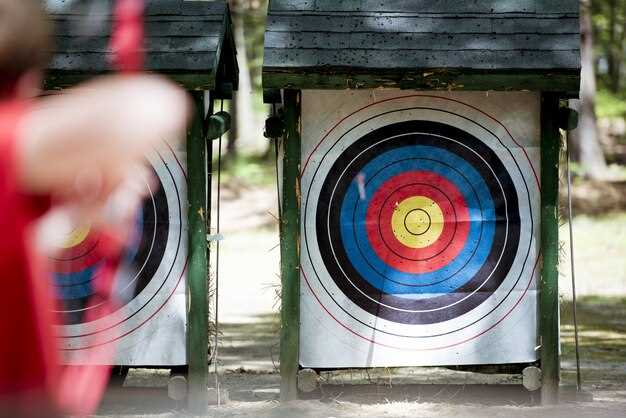
In the world of marksmanship, hitting a moving target presents a unique set of challenges that demands precision, quick reflexes, and practiced aim. Mastering the art of targeting moving objects requires shooters to develop not only their shooting skills but also their understanding of the dynamics involved in target movement. Whether in sport shooting, hunting, or tactical scenarios, the ability to accurately engage a moving target can often determine the success of the operation.
The key to achieving accurate hits involves not just pulling the trigger at the right moment but also anticipating the movement. Shooters must learn to assess the speed and trajectory of the target, adjusting their aim in real time. This necessitates a mastery of several techniques, including lead shooting and tracking, which are essential for maintaining accuracy even as the target moves unpredictably.
Additionally, a quick response time is crucial. Developing the ability to rapidly assess a target’s motion and adapt one’s shooting strategy can be the difference between success and failure. In this article, we will explore essential shooting techniques that enhance performance against moving targets, equipping shooters with the skills necessary for any situation where precision and speed are paramount.
Understanding Lead and Tracking for Moving Targets

When engaging moving targets, it is essential to master the concepts of lead and tracking. These techniques help shooters align their aim with the future position of targets, ensuring quick and accurate hits. Lead refers to the distance ahead of a moving target where the shooter should aim, compensating for the target’s speed and direction.
To calculate lead, shooters must assess the target’s velocity. A faster target requires more significant lead, while slower targets demand less. Factors such as distance and projectile speed also influence the necessary lead. Shooters can practice estimating these variables in varying scenarios, enhancing their ability to predict the target’s path.
Tracking is the process of maintaining sight on a moving target as it traverses the shooter’s field of vision. Efficient tracking involves smoothly following the target’s movement while simultaneously adjusting the aim based on the calculated lead. This skill is crucial for maintaining consistent targeting, especially in dynamic environments.
Combining lead and tracking allows shooters to achieve more accurate hits. When engaging moving targets, it is vital to remain focused and patient, firing only when the crosshair is appropriately placed. Regular practice with these techniques aids in developing instinctive responses during real-time shooting situations, ultimately leading to improved performance.
Quick Aiming Methods to Compensate for Motion
Aiming accurately at moving targets can be challenging. Implementing quick aiming methods is essential to ensure effective hits. Below are some practical techniques designed to improve your accuracy when the target is in motion.
- Lead Targeting: Anticipating the target’s path is crucial. Adjust your aim in front of the moving target rather than directly at it. The distance to lead will depend on the speed of the target and the distance from you.
- Tracking Method: Instead of aiming and firing in a static manner, follow the target’s movement with your firearm. This technique involves keeping your sight aligned with the moving object to maintain a consistent point of aim.
- Pivoting: Practice pivoting your body and firearm smoothly as the target moves. This technique helps keep your aim steady while compensating for any lateral movements.
- Point Shooting: In some situations, especially at close range, point shooting can be effective. This method relies on instinctive aiming rather than precise sight alignment, allowing for quicker reactions.
- Use of Reference Points: Familiarize yourself with specific reference points on the range to help gauge distances and angles. This knowledge enables quicker adjustments when aiming at moving targets.
Mastering these quick aiming methods requires practice and familiarity with your weapon system. Regular drills with a focus on moving targets can significantly enhance your ability to hit accurately in dynamic scenarios.
Practice Drills to Improve Target Acquisition Speed

Improving target acquisition speed is essential for shooters aiming to enhance their performance against moving targets. To achieve quick and precise aiming, practitioners can incorporate various drills into their training routines.
One effective drill is the “Swing and Shoot” exercise. Set up multiple targets at different distances and angles along a designated shooting path. As you move from target to target, practice quickly transitioning your sight alignment and focus. This will help sharpen your ability to gauge distance and direction, allowing for faster response times when engaging moving targets.
Another beneficial drill is the “Ball and Dummy” method. Pair up with a partner who will randomly call out target commands while you remain in a ready position. When a target is called, quickly aim and engage as if the target is moving. This drill promotes quick decision-making and reinforces the practice of maintaining situational awareness.
The “Snap Shooting” drill also enhances target acquisition speed. Use a timer to simulate real-time pressure. From a ready position, engage targets as soon as they appear within your line of sight. This encourages quick aiming and helps develop the muscle memory needed for accurate shooting under time constraints.
Incorporating these drills into regular training sessions will reinforce the fundamentals of aiming and improve overall efficiency when tracking moving targets. Consistent practice will ensure that shooters can quickly acquire their target, respond accurately, and enhance their overall shooting proficiency.



